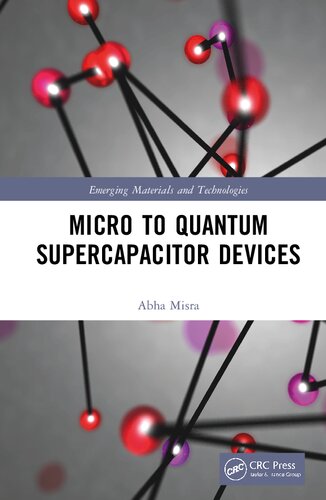

Most ebook files are in PDF format, so you can easily read them using various software such as Foxit Reader or directly on the Google Chrome browser.
Some ebook files are released by publishers in other formats such as .awz, .mobi, .epub, .fb2, etc. You may need to install specific software to read these formats on mobile/PC, such as Calibre.
Please read the tutorial at this link: https://ebookbell.com/faq
We offer FREE conversion to the popular formats you request; however, this may take some time. Therefore, right after payment, please email us, and we will try to provide the service as quickly as possible.
For some exceptional file formats or broken links (if any), please refrain from opening any disputes. Instead, email us first, and we will try to assist within a maximum of 6 hours.
EbookBell Team

4.1
20 reviewsSupercapacitors have established their role as high-power density devices capable of storing energy for multiple cycles; these devices are more plentiful than batteries. This book outlines the fundamentals of charge-storage mechanisms in different configurations of supercapacitors. It describes the supercapacitor-related phenomena, state-of-the-art supercapacitor technologies, design and fabrication of electrodes, supercapacitor materials, macro-supercapacitor, planar supercapacitor, significance of electrode design, merits, demerits of current technologies, and future directions. It also details related physics, including prospective materials and electrode parameters.
Features:
Provides understanding of the device architecture, electrode design, and pros-cons of classical supercapacitors
Explains material design in the context of electrochemical energy storage
Covers state-of-the-art quantum supercapacitor and technological challenges
Describes advanced versions of supercapacitor devices, including macro-to-micro scale devices and applications at different scales
Includes details of challenges and outlines of future designs
This book is aimed at researchers and professionals in electronics, electrochemistry, energy-storage engineering, chemical engineering, and materials science.